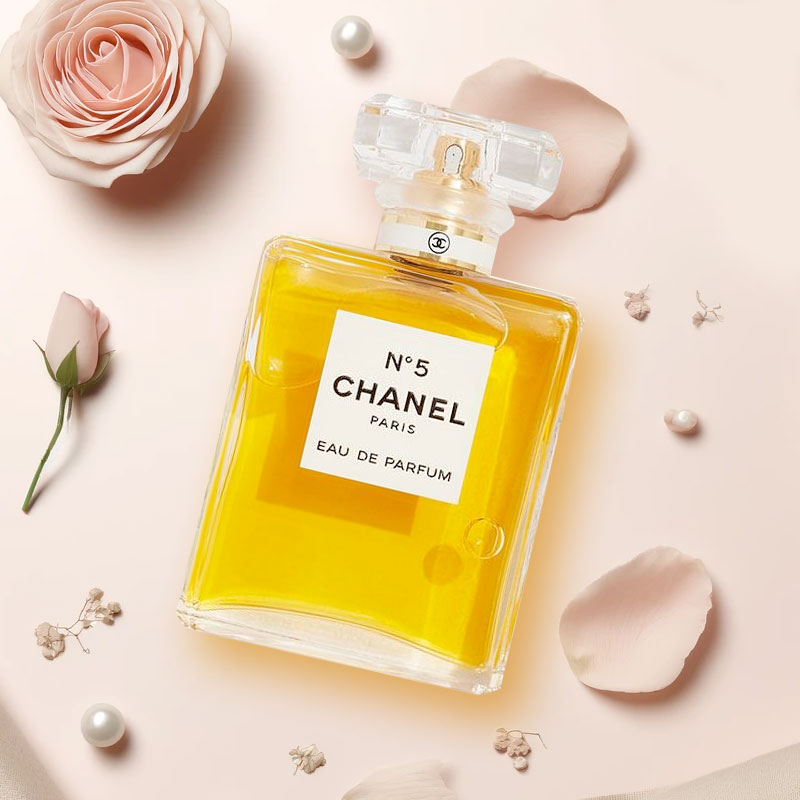
Perfume terminology can be tricky, so we've put together this perfume glossary to help you understand the intricate language of fragrances.
| Term | Description |
|---|---|
| Accord | A balanced blend of three or four fragrance notes that create a unique scent. |
| Aldehydes | Organic compounds that add sparkle and freshness to fragrances, often described as a 'clean' scent. These were first incorporated into a fragrance in 1921 in the famous 'Chanel No 5'. |
| Amber | A sweet, warm, and resinous scent derived from labdanum, vanilla, and various balsamic notes. |
| Animal, Animalic | Fragrances that contain ingredients that mimic natural animal scents, such as musk, covet or sperm whale (ambergris). |
| Aromatherapy | Aromatherapy is a holistic healing treatment that uses natural plant extracts for health and wellbeing. Typically using aromatic compounds extracted from plants (essential oils). Aromatherapy is used for a range of purposes, including pain relief, massage, and improving mood. |
| Balance | When refering to the term "Balance" in Perfumery, it refers to having a harmonious blend of fragrance notes within a scent. A balanced perfume effectively combines top, middle and base notes in a way that no single note overwhelming dominates the others. |
| Base Notes | The last to develop and longest-lasting notes in a perfume, providing depth and solidity. |
| Bergamot | A type of citrus fruit whose oil is commonly used in fragrances for its sharp, fresh aroma. |
| Bouquet | Refers to a fragrance composed of several floral scents. |
| Chypre | A fragrance family characterised by an earthy, woody, and mossy scent profile, often containing oakmoss, patchouli, and bergamot. Also means 'Cypress' in French. |
| Citrus | Fragrances that include the scents of fruits like lemons, oranges, and grapefruits. |
| Concentration | The strength of a fragrance, which affects how long it lasts on the skin. Common concentrations include eau de parfum, eau de toilette, and cologne. |
| Dry Down | The final phase of a fragrance, which occurs after the top and heart notes have evaporated, leaving only the base notes. |
| Eau de Cologne | A light fragrance concentration with a lower percentage of perfume oils (typically 2-4%). |
| Eau de Parfum (EDP) | A fragrance with a higher concentration of perfume oils (typically 15-20%), making it last longer than eau de toilette. Find out more about how long perfume lasts. |
| Eau de Toilette (EDT) | A fragrance with a moderate concentration of perfume oils (typically 5-15%). |
| Floral | A fragrance family consisting of scents that primarily feature flowers such as roses, jasmine, or lilies. |
| Fougère | A fragrance family characterised by a blend of fresh herbs and mossy undertones, often marketed towards men. Often containing notes like Oakmoss, Geramanium and Lavender. |
| Gourmand | Fragrances that have mouth-watering scents that often tend to smell edible. Often this resembles desserts or sweet food items, often containing fragrance notes like vanilla, caramel, or chocolate. |
| Heart Notes | The middle notes of a fragrance, which emerge after the top notes dissipate. They are considered the main body of the perfume. |
| Musk | Originally derived from the musk deer, now mostly synthesized; provides a base for many perfumes, adding depth and warmth. |
| Notes | The term 'note' represents the scents that can be smelled from a perfume. These are typically described as top (initial), middle (heart) and base (lasting) notes. |
| Oriental | A fragrance family characterised by rich and warm scents, often containing hints of spices, resins, and woods. |
| Patchouli | A bush from the mint family whose scent is a favourite for earthy, woody and spicy perfumes. |
| Parfum | This is the most concentrated, strongest on long-lasting form of fragrance. Usually containing oil concentration of 20% - 40%. Typically lasting around 6 - 8 hours on your skin. Learn more about the different types of perfume here. |
| Perfumer | A skilled professional who creates fragrances, sometimes referred to as a "nose" due to their skill and in-tune sense of smell. |
| Sillage | Refers to the trail of scent left by a fragrance; how perceivable a perfume is to others when worn. |
| Synthetic | Synthetic ingredients are made chemically in labratories. They are often made to substitute natural ingredients that have become to hard to sustainably obtain, or have become too expensive. |
| Top Notes | The initial scents of a fragrance, which are noticeable immediately upon application but evaporate quickly. |
| Woody | A fragrance family featuring warm and opulent scents derived from woody elements like sandalwood and cedarwood. |